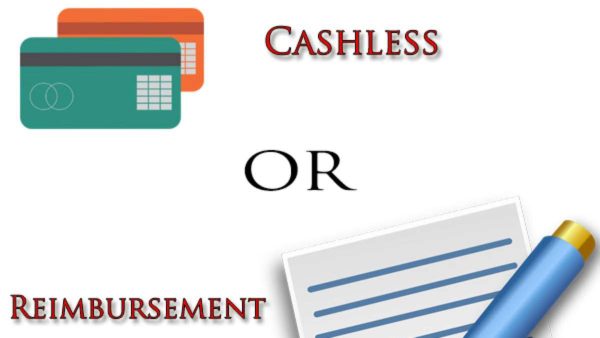As individuals grow older, access to efficient healthcare becomes increasingly important. While a solid health insurance policy provides financial coverage, the real relief lies in how smoothly the claim process works. For senior citizens, who may need urgent or planned medical interventions, selecting the right claim method can directly affect their treatment journey. The two common options available—cashless and reimbursement—offer different advantages and limitations. Understanding both is key to making the right choice.
Cashless vs Reimbursement for Senior Citizens
1. Cashless Claim Process: Direct and Hassle-Free
Cashless claims allow policyholders to receive treatment without paying for medical expenses upfront, provided they visit a network hospital. The hospital and insurer coordinate directly to settle bills, sparing the insured from financial stress during or after hospitalisation.
How the Process Works:
- The insured visits a hospital that is part of the insurer’s authorised network.
- The hospital sends a pre-authorisation form to the insurer’s health administration team.
- The insurer verifies the request against the health insurance policy and responds—often within one working day.
- In most cases, a first response is shared within 60 minutes of receiving the pre-authorisation.
- If approved, the hospital bills are settled directly, and the patient can be discharged without making a payment.
- If further details are needed, the hospital may receive a query. Once additional information is shared, the approval process is typically completed within seven working days.
- In case of a denial, treatment can still proceed, but the patient will need to file a reimbursement claim afterwards.
Why It Benefits Senior Citizens:
- No need for immediate payment at the hospital.
- Minimal paperwork is involved at the time of treatment.
- Reduces stress during medical emergencies.
- Ideal for individuals with limited mobility or cognitive constraints.
Limitations to Consider:
- Cashless treatment is only available at network hospitals.
- Pre-authorisation may delay admission in some urgent situations.
2. Reimbursement Claim Process: More Flexibility, More Effort
The reimbursement process allows policyholders to choose any hospital for treatment—networked or not. They initially pay the hospital expenses themselves and later submit a claim to the insurer to recover the amount.
How the Process Works:
- After hospitalisation, all original documents—bills, reports, discharge summaries, prescriptions—must be collected.
- These documents are submitted to the insurer for verification.
- If any paperwork is missing, the insurer notifies the policyholder with a request for additional information.
- Upon receiving the required documents, claims are generally settled within 10 working days via ECS (subject to policy terms).
- If documents remain incomplete even after three reminders (sent 10 days apart), the claim may be closed.
- Approved claims are typically processed within seven working days after final verification.
- If a claim does not fall under the policy’s coverage, it will be declined with a written explanation.
Why It Works for Senior Citizens:
- Offers complete freedom to choose any hospital or specialist.
- Suitable for those in areas with limited network hospital options.
- Allows access to preferred doctors or institutions.
Potential Challenges:
- Requires upfront payment, which can be burdensome.
- Involves significant paperwork and follow-ups.
- Needs support from family or caregivers for document management.
3. Comparison Between Cashless vs Reimbursement Claim
| Factor | Cashless Claim | Reimbursement Claim |
| Payment at Treatment | Not Required | Required |
| Hospital Eligibility | Only network hospitals | Any hospital |
| Paperwork at Hospital | Minimal | Extensive |
| Claim Processing Time | Same or next working day | 7–10 working days |
| Best For | Urban areas/emergencies | Rural areas/preferred care |
4. Choosing the Right Claim Option
The decision between cashless and reimbursement claims should be based on a few critical factors:
- Proximity to network hospitals: Cashless is convenient when hospitals in the insurer’s network are close by.
- Immediate financial readiness: Reimbursement requires payment at the time of treatment, which may not be suitable for everyone.
- Family or caregiver support: Senior citizens often need help handling the paperwork for reimbursement claims.
- Personal comfort and trust: Some patients may prefer familiar hospitals not in the network, which makes reimbursement the only route.
A good health insurance for senior citizens should ideally provide access to both options, allowing flexibility depending on the situation.
Conclusion
Both cashless and reimbursement claim processes offer unique benefits and serve different needs. For senior citizens, the goal is to minimise stress during medical treatment. Cashless claims offer speed and simplicity, while reimbursement allows choice and independence. Ultimately, the right option will depend on the patient’s location, financial situation, and support system.
In either case, insurers who offer prompt claim handling, wide hospital networks, and transparent procedures provide a more seamless experience. Hospitals tied up with insurers like Bajaj Allianz General Insurance Company often ensure timely authorisation, minimal delays, and efficient support—making them a reliable choice for senior citizens navigating healthcare.



